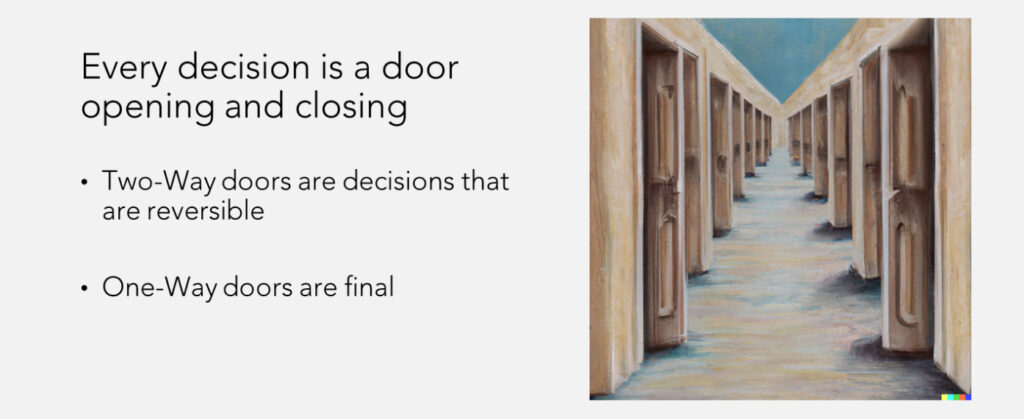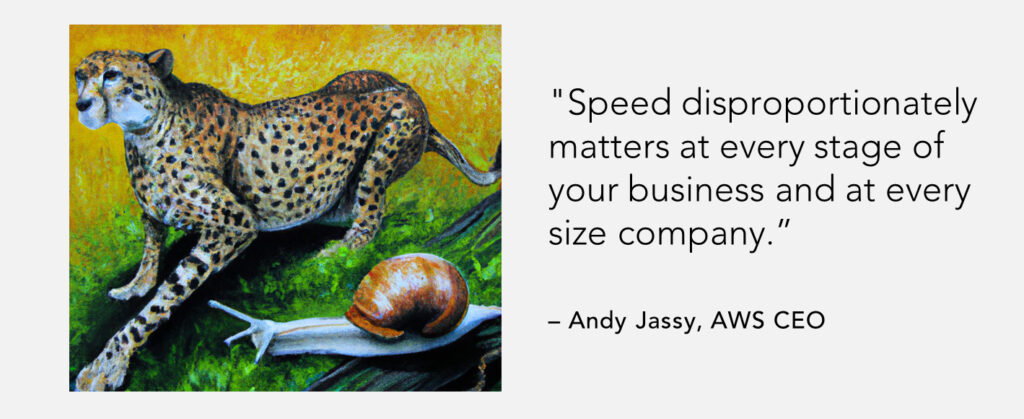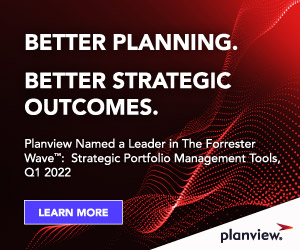
The success or failure of every company and every individual within a company is the culmination of the decisions they make.
Some of these decisions are strategic “bet the company” decisions – like which low-carbon technology to bet on to diversify their portfolios and meet emissions reductions goals, which country to build a data center in, or which drug line to invest in proving out over the next decade for future decade revenue realization.
There is no one obvious path forward, and the level of investment and risk vs. reward varies. Plus, the market is fluid, as technological breakthroughs are happening at a rapid pace. Other decisions are made at the individual level on prioritization and focus on a given day.
Companies that transform the quality and speed of their decisions consistently outperform their competitors.
So how can you make smarter decisions faster? I invited Dr. Amisha Boucher, Principal Engagement Manager at Planview, to join me in discussing this topic.
Amisha earned her Ph.D. in Energy Resources Engineering from Stanford University. Her specialty and lifelong area of study is guided decision making for the most complicated decisions that companies make – ones with multi-year or even multi-decade impact.
Planview works with a variety of companies on decision making, including 12 major industries, 59 of the Fortune 100, and over 4,500 midsize and large companies. This provides us with a unique vantage point on competitive differentiation in decision making.
In this two-part series, we’ll share our perspective of effective strategies for better decision making in business, couched in real-world scenarios. Let’s get started.
One-Way vs. Two-Way Doors: A Decision-Making Paradigm
All decisions should not be treated the same way. When I was at Amazon, we would frame decision making with the paradigm of doors.

A two-way door is a decision that is easily reversible. You can walk through the door, see what’s on the other side and walk back through if you don’t like what you see. The best way to learn what’s on the other side is to open it.
An example would be putting a product in front of a customer to understand what they think about it, rather than speculating what they think about it. Most decisions are two-way doors.
A one-way door is a decision that is difficult to reverse. Walking through the door has lasting consequences and cannot be reversed. If you buy a parrot for your child, it will live to be 50 years old. It has more consequences than buying a goldfish for your child.
One-way doors involve long-term financial commitments. They set a chain of events in motion. Once made, this decision might burn a bridge or eliminate a second option.
Most decisions are two-way doors, but they are treated with the rigor and bureaucracy of a one-way door decision.
Many one-way doors can be reconstructed to make them two-way doors. Here’s an example: Outdoor outfitter REI contemplated rolling out solar panels to all of their stores to reduce their carbon footprint, reduce energy costs, and establish a connection with customers who share environmental sustainability values.
Rolling this out across their global network of stores represented a one-way door decision with significant infrastructure costs, logistical challenges, and usage of a large portion of corporate initiative bandwidth. REI reduced the decision to a two-way door by piloting in one door, measuring results, and then scaling.
Companies develop a culture of decision making over time in alignment with the rigor that has rewarded them with success over time.
I once worked closely with a 100-year-old, very successful Fortune 500 engine manufacturer. They are a top engineering company and attract the best mechanical engineers in the country who progress into leadership roles. They are converting to electric, and hydrogen, and are optimizing traditional engines to emit 90% less harmful emissions than those produced prior to 2000.
As I worked with them to develop a culture of innovation with their digital products, their culture of decision making for engineering physical products came into sharp contrast with a suggested culture of experimentation to learn what customers value from digital products.
Particularly with digital product delivery, technology has advanced such that the barrier to placing a digital product in a customer’s hands is much lower. But at this company, the rigor and justification for progressing ideas were outsized, as if the digital product decisions had multi-year impacts.
Manufacturing companies are comfortable with physical prototypes of products for experiential learning. However, digital prototypes can be shipped to customers in a fraction of the time that physical prototypes can be created. Employees leading digital product areas were not empowered to make decisions and needed to escalate to senior executives who were impossible to calendar and then repeatedly bumped meetings of their subordinates.

We see a continuum of decisions for companies. Decision-making rigor must differ based on the implications of the decision. In an era of growing economic constraints, decisions where organizations are tuning the efficiency with which they deliver value must be data-driven and defensible. They also must be made at high speed.
Speed Matters
Quality of decisions is essential for the success of individuals and companies. But the speed with which decisions are made is the second differentiating advantage or disadvantage.

A delayed decision is a decision not to act. This is a risky posture in a world of growing change and volatility. Inaction is a competitive death sentence for companies in this age. The growth of Artificial Intelligence (AI) integration into work is an exponential disruption for industries in terms of efficiency and effectiveness.
AI has impacted virtually every industry — including the world of fine art, as shown by the two “paintings” in this post. For fun, I created the images in seconds with AI using the prompt, “Draw an oil painting of a cheetah and a snail.” And before that, “Draw an oil painting of a series of 20 doors that are slightly open extending into the distance as if along a hallway.”
We currently use AI to sift through comments on initiatives to give executives a sentiment on how well an initiative is going in addition to green, yellow, and red status. They share that this has an enormous impact because status colors tend to be rosy until the initiative is too far gone to save. Generative AI has reduced the time needed to develop knowledge work like software and marketing materials. Decision making on what to do has become the bottleneck for digital products.
Click here to read part two of this series, where you’ll learn about guided, data-driven decision making and what makes the process different among executives, digital team members, and analysts, as well as ways to disrupt decision-making bias – all with the intent of making decisions a competitive advantage.




